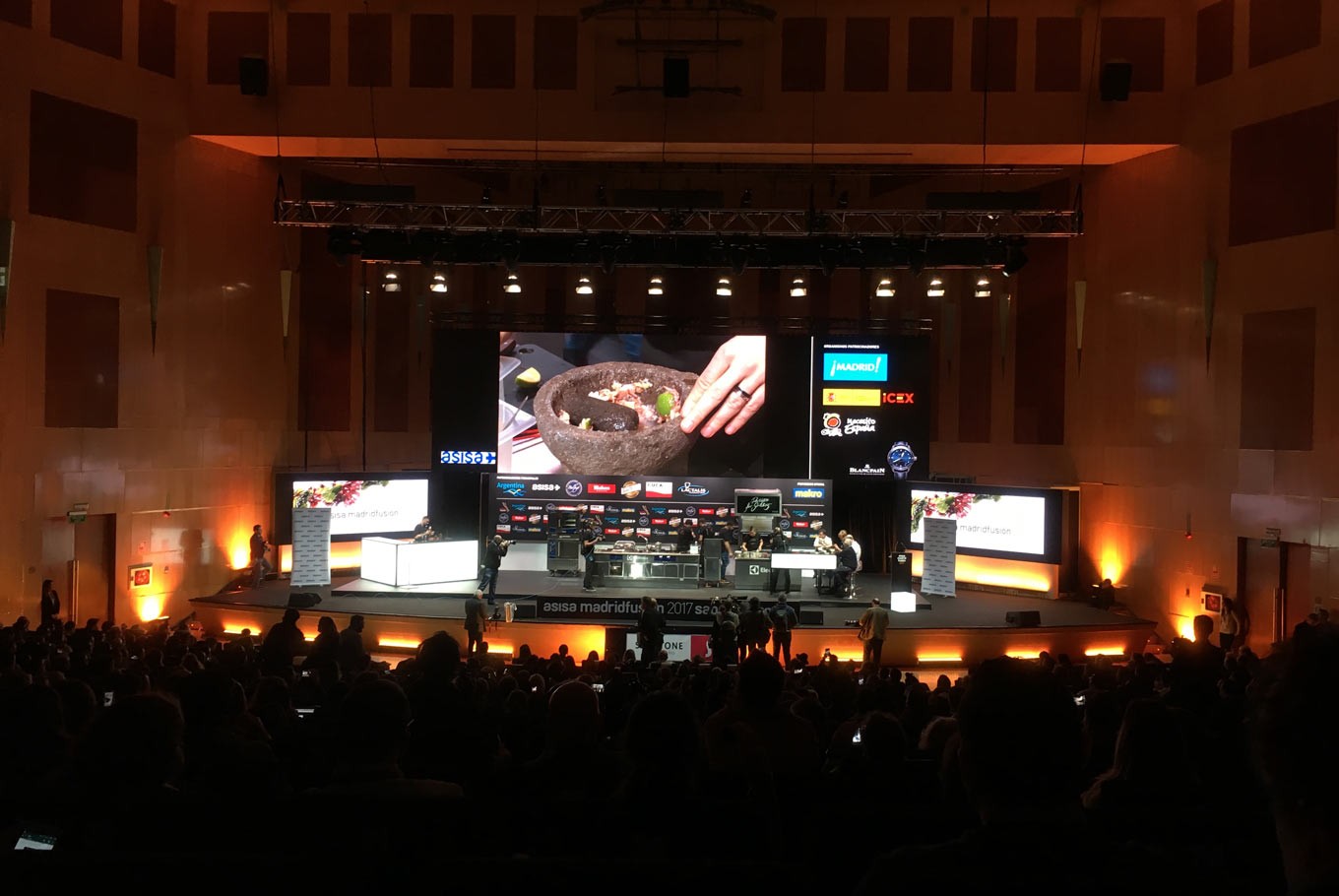Popular Reads
Top Results
Can't find what you're looking for?
View all search resultsPopular Reads
Top Results
Can't find what you're looking for?
View all search resultsThe zeitgeist of Asian food trends that influence the world
Asian flavors are the new zeitgeist that influence the world.
Change text size
Gift Premium Articles
to Anyone
A
sia and particularly South East Asia, have been the center of attention with regards to economic growth, buying power, culture and tradition, music and fashion, and even food.
The concept of going back to tradition and embracing organic foods has become the new Zen that the world is looking for. Asian flavors are the new zeitgeist that influence the world.
Like fashion, food moves in trends and now, more than ever, almost every famous chef around the world is trying to create his or her own new invention by mixing European cooking techniques with Asian flavors. They aim to make a dish that can give that complexity, yet balances taste by combining knowledge, tradition and age-old formulations in modern cuisine. Why? Because the world’s appetite, contrary to what you may think, is actually collective. People want to eat the zeitgeist.
At this year’s annual Madrid Fusion event, an international gastronomy event that gathers renowned chefs from around the world in Madrid, Spain, this zeitgeist was used by almost all of the chefs who gave a presentation.
During three-day event, we saw many chefs work with various Asian elements, from using tea fermentation known as kombucha (founded in Manchuria in around 220 BCE), creating Asian-style modern skewers, using turmeric and curry leaves, to creating paste using stone grinders (easily found in any Indonesian household) as part of their dish creation.
Read also: Singapore’s Michelin-starred street food vendor opens in Jakarta
It is quite obvious that the idea of fusing Asian techniques and European local products is the new trend for chefs these days. When we met the famous chef Juan Roca from El Celler de Can Roca, which was named the world’s best restaurant in 2013 and 2015 by Restaurant Magazine, he agreed that Asian elements are playing a big role in his kitchen. Even in his Spanish kitchen, Juan Roca plays with miso (fermented soya paste), kimchi and even our own tempeh!
 Juan Roca from El Celler de Can Roca, ranked the world’s best restaurant in 2013 and 2015 by Restaurant Magazine.(Erza S.T. /File)
Juan Roca from El Celler de Can Roca, ranked the world’s best restaurant in 2013 and 2015 by Restaurant Magazine.(Erza S.T. /File)
“We are doing tempeh from Indonesia now, but here, we change the soya with local beans. We follow the technique of tempeh-making from Indonesia, but we want to elevate it by using our local beans,” said Roca, who visited Indonesia last Christmas.
Aside from tempeh, Roca was also smitten by Indonesian food in general. According to him, it stands out compared to Thai, Chinese or Korean food.
“The flavor of Indonesian food is spicy but sweeter with a hint of saltiness,” he said.
Similar sentiments came from one-Michelin Star chef Mario Sandoval of Coque. The chef, known for his creative and avant-garde approach, also finds this whole Asian trend to be quite fascinating.
“It’s new to me. I’ve been doing research for 2 years and try to implement [my knowledge] with the local products that we have. I fermented rice using the Asian technique with local rice from Spain,” he said.
Read also: Indonesian chefs shine on global stage
It is definitely a new edge that Sandoval likes to explore as Coque is all about providing a unique experience.
It is really interesting to see how far Asian food culture has inspired the world. The influx of people coming from countries like China, Japan, Thailand, South Korea and Vietnam into the West over decades could be one of the main reasons why Asian fusion has become a trend.
This nuance is confirmed by Isabella Falco, the director of communications of Promperu (Peruvian Tourism Board), who also sees this Asian influence in her country’s culinary scene.
Isabella also added: “We do feel that there is a strong link between Peruvian and Southeast Asia as we have had migrants coming first from China, then Japan. To a point that many Peruvian foods these days are incorporating Chinese wok. We added the Chinese and Japanese cooking know-how into our Peruvian traditional cuisine and create a fusion.”
Similar to Indonesia, Peru is also very much into spices, with chili being their signature ingredient. Known as aji amarillo, it is a special kind of chili that only grows in Peru and is frequently used in Peruvian dishes.
The Peruvian-Asian fusion mentioned by Isabelle has actually arrived in Bali, at Above Eleven rooftop bar and restaurant. As part of the newly build Samasta entertainment complex in Jimbaran area, Above Eleven is actually franchised from Bangkok. It serves that perfect blend of Peruvian-Japanese dishes. Here, you can classic Peruvian and Japanese dishes, as well as fusion creations, such as acebichado sushi roll, which is infused with salsa criolla, and salmon anticucho sushi roll, which uses chimichurri sauce.
In Jakarta, a similar Peruvian-Japanese concept can soon be found on the top three floors of the Westin Hotel at a restaurant called Henshin, slated to open this month.
Indonesia is one of the most influential archipelagoes in Southeast Asia, offering a wide range of flavors. The country has quite a promising opportunity to play a larger role in this Asian infusion trend. Perhaps it is just a matter of time before Indonesian fusion in food can be seen and sampled around the world.
After all, we already received recognition from CNN for rendang, nasi goreng and satay in its 2011 World’s 50 Best Foods list. Let’s hope that our great talents, such as William Wongso, Petty Elliott, Sandra Djohan and many others, can turn Indonesian flavors into the essence of the Asian food trend. (asw)
***
Erza S.T. Is the founder of Indonesia Opera Society who is also an avid foodie. He is one of the Iron Chef judges and has been a food critic since the year 2000.
---------------
Interested in writing for thejakartapost.com? We are looking for information and opinions from experts in a variety of fields or others with appropriate writing skills. The content must be original on the following topics: lifestyle ( beauty, fashion, food ), entertainment, science & technology, health, parenting, social media, and sports. Send your piece to community@jakpost.com. Click here for more information.











